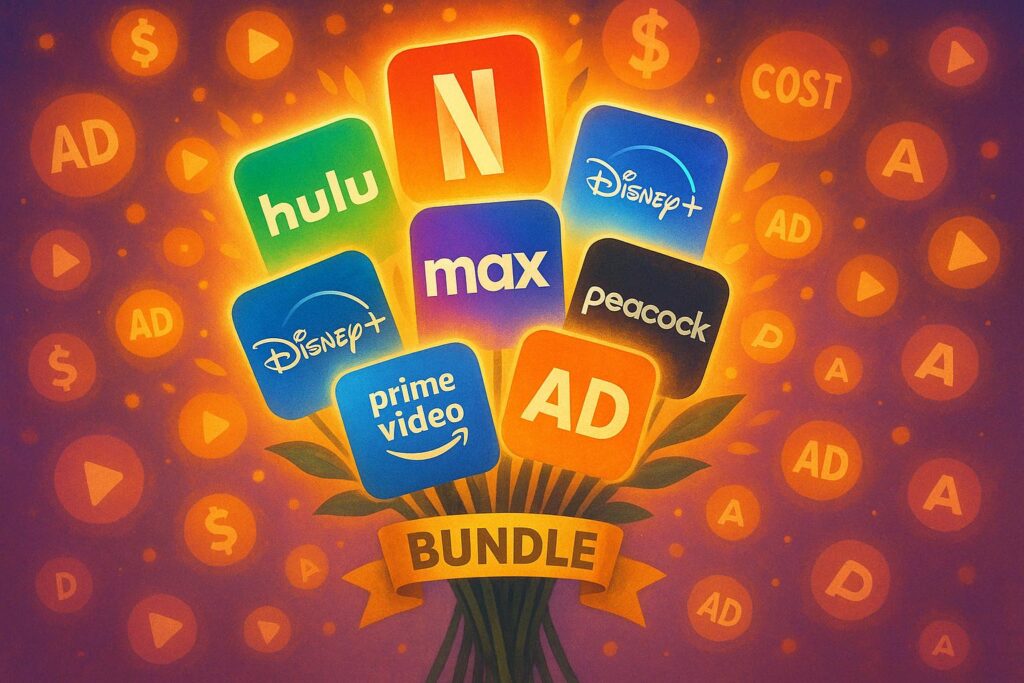Listen to the article
Amid inflation and economic uncertainty, U.S. streaming video consumers are adopting new strategies such as bundling and acceptive ads to sustain their favourite services, with industry innovation crucial to maintaining loyalty.
Amid rising inflation and economic uncertainty, streaming video subscribers in the U.S. are prioritising their spending on digital entertainment, even as they scale back on other household expenses to maintain their favourite services. A recent study by digital platform company Bango reveals that about a third of U.S. streamers (34%) have cut back on other areas of their budget specifically to keep paying for their streaming subscriptions.
The report, titled “Streaming Squeeze,” highlights the tight squeeze inflation is placing on household budgets. Nearly two-thirds (63%) of Americans with streaming subscriptions say they cannot afford all the platforms they desire, and more than half (55%) feel their streaming bills are higher than they would like. Despite these financial pressures, consumers remain reluctant to cancel their core subscriptions. Netflix remains the dominant “forever subscription” brand, with 60% of subscribers declaring it a service they would never cancel. This status is underscored by cross-generational appeal, contrasting with other services: Prime Video shows stronger loyalty among older generations, especially Boomers, while Disney+ connects more closely with younger viewers such as Gen Z.
The way consumers manage rising streaming costs is evolving. Many are adapting by rotating subscriptions, moving between ad-supported and ad-free tiers, or bundling services. More than two-thirds of subscribers (68%) have taken services through bundles or third-party channels, which often offer significant monthly savings and simplify administration. Those who save through bundles report an average monthly saving of $16.32, with about half saving between $15 and $24 or more. Bundling also encourages retaining more subscriptions overall, as the reduced costs and ease of management make it feasible to keep multiple services.
Ad-supported subscription tiers are playing a pivotal role. While a majority of consumers (69%) feel paid subscriptions should remain ad-free, 60% are willing to accept increased advertising in exchange for lower prices. The flexibility of ad tiers works both ways: 42% of users downgrade to cheaper ad-supported plans when available, while 39% upgrade to avoid ads. Notably, younger subscribers, particularly Gen Z, are more likely to engage with these tier options, perhaps using them as a “safety valve” to balance budget constraints with content access.
Price sensitivity is shaping subscriber behaviour more broadly, with industry research indicating that over half of consumers would consider cancelling or downgrading if prices rise significantly, more than 20%. Bundling also emerges as a key strategy to maintain subscriptions and foster loyalty, with 42% more likely to keep services if they are part of a bundled offering rather than standalone subscriptions.
Despite the challenges around cost, overall consumer satisfaction with streaming value remains relatively high. Recent surveys report that 94% of respondents feel streaming services provide good value for money, even as general willingness to cut back on the number of subscriptions remains modest, only 28% plan to reduce their streaming subscriptions in the next six months. Services like Netflix, Amazon Prime, and other TV/movie streaming platforms remain among the least likely to be dropped.
This dynamic suggests that while consumers are feeling the pinch from inflation and rising subscription prices, their commitment to streaming content is robust. They are showing flexibility in subscription management, willingness to tolerate ads for savings, and a preference for bundling, all aimed at preserving access to entertainment in an economically challenging environment. Streaming companies may need to continue innovating with flexible pricing, ad-supported tiers, and bundled packages to sustain subscriber growth and retention in this competitive landscape.
📌 Reference Map:
- [1] (TV Technology) – Paragraphs 1, 2, 3, 4, 5, 6
- [2] (TV Technology) – Paragraphs 1, 2
- [3] (NewscastStudio) – Paragraph 1, 2
- [4] (Ask Attest) – Paragraph 7
- [5] (Digital Content Next) – Paragraph 7
- [6] (CNBC) – Paragraph 6
- [7] (InsideHook) – Paragraph 8
Source: Noah Wire Services


